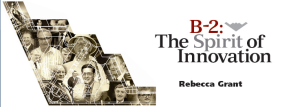Abstract
This post’s goal is to gather scattered pieces of information about stealth technology and share it in a logical and clear order. Links to posts, articles, popular books, scientific papers and technical books on the subject will be provided. In addition, valuable links to video materials where it is appropriate will be provided too along with my description of them.
Introduction
Stealth technology or as it also known in a more technical term Low Observable is a fascinating technology that has been put for military use. For a curious person there always exists a temptation to figure out how it functions, why it functions this way and what future brings with it for this technology.
So far stealth has been used in air, sea and beneath the sea. There are a number of attempts to use stealth on the ground to mask vehicles. But it is reasonable to extrapolate the usage of stealth in space too.
Stealth technology evolved throughout the years and came to operational usage for the first time at first Gulf War in 1991.
Early attempts to deceive the adversary by means of stealth dating back to 1943 when Yehudi Lights project was initiated.
It is worth mentioning that stealth technology was incorporated by nature even earlier than by men. For instance, land creatures, such as chameleon or ocean creatures, such as Peacock Flounder below use color camouflage and restrained body movement to deceive predators and become kind of invisible.
A Few Words on Stealth
The purpose of Low Observable technology is to hide vehicle’s visual, acoustic, infrared, electromagnetic and radar signatures be it a submarine, an aircraft or a spacecraft. To achieve this goal those vehicles incorporate in their design special shape, RADAR or SONAR absorbent materials and other design considerations that are based on physics, math and other exact sciences.
Logical and systematic approach
Due to a large amount of various materials on the subject it is nice to have it sorted in a way that a novice may learn about stealth technology in a interesting and encouraging way starting from simple to complex. To this end I’ll start from general articles and posts on Low Observable subject moving to more detailed materials.
Posts
One can look at posts written by renowned journalist and defense editor of Aviation Week & Space Technology journal Bill Sweetman that writes on stealth.
Tyler Rogoway’s blog on aviation has pretty informative posts on various aviation topics and among them stealth.
General Articles
Understanding Stealth by John Shaeffer.
This is an article written to help non-technical personnel gain insightful knowledge on how stealth works.
B-2 Spirit of Innovation, 2013, by Rebecca Grant.
Book’s overview
A new book from Northrop Grumman about the people and innovation that created the U.S. Air Force’s B-2 stealth bomber, one of the nation’s most powerful, most survivable – and most valued aircraft
Analogues of Stealth, 2002, by Robert P. Haffa, Jr. and James H. Patton, Jr., the Northrop Grumman Analysis Center.
A quote from the article
The U.S. Department of Defense plans to invest hundreds of billions of dollars in stealthy aircraft over the next several decades. Will low-observable (LO) capabilities incorporated in military aircraft such as the B-2 bomber, the F-22 air superiority fighter and the F-35 joint strike fighter prove as successful and enduring as submarine stealth?
SURVIVABILITY IN THE DIGITAL AGE: The Imperative for Stealth, 2017 by Maj Gen Mark Barrett, USAF (Ret.) with Col Mace Carpenter, USAF (Ret.). This article is a must read for every person interested in application of low observable to air crafts.
Stealth, or aircraft signature reduction, is a potent and viable military capability in modern combat, and
will remain so well into the future. It is not, however, an all or nothing capability, as some critiques have
suggested. Investments in stealth technology significantly improve the ability of US aircraft to penetrate
enemy air defenses and create significant costs for adversaries who attempt to defend against this technology
Aviation History Books on the Subject
Lockheed F-117 Nighthawk Stealth Fighter (Air Vanguard), 2014, by
This book is pretty concise and specifically focuses on F-117A description, but still it is worth reading if you’re ready to pay about $15.00 for it.
This is an interesting and refreshing book on the subject of black projects at Area 51 that includes among them information on SR-71, Tacit Blue, F-117A and B-2 aircrafts. Author’s writing style is encouraging and easy to follow. It is well worth its $15.00 price.
Books by Key Skunk Works’ Engineers
Kelly: More Than My Share of It All, 1989, by
This book is highly recommended for reading due to Kelly John’s insights and life journey.
Skunk Works: A Personal Memoir of My Years at Lockheed, 1996, by
Just read and you’ll found out why this book is a pearl.
Radar Man: A Personal History of Stealth, 2010, by
This books is written by RADAR engineer Ed Lovick Jr. that contributed to U-2, SR-71, D-21, F-117A stealth properties. It is very entertaining and likely will be very much loved by radio electronics engineers since a background in this profession required to fully appreciate the book content.
Scientific papers

Low Observable Principles, Stealth Aircraft and Anti-Stealth Technologies, by Konstantinos Zikidis (Maj, HAF), Alexios Skondras (2nd Lt, HAF), Charisios Tokas (2nd Lt, HAF)
This is a good paper on current state of the art of stealth technology. This article was published in Journal of Computations & Modelling, 2014, Volume 4, Issue 1. Reading and understanding it requires basic knowledge of radio electronics.
Method of Edge Waves in the Physical Theory of Diffraction, 1962
Petr Ufimtsev’s groundbreaking work that paved the way for stealth feasibility.
Technical Books
Have Blue and the F-117A: Evolution of the “Stealth Fighter” (AIAA Education), 1997 by
This is a book on stealth technology as it was developed for F-117A aircraft. It goes into detailed description of Low Observable principles.
A quote from official book’s introduction
This text documents the history, observations and lessons learned from the development and acquisition of the first very-low-observable combat aircraft. The book is a case study of the high-payoff, low-profile strike fighter development effort (code-named “Have Blue” and “Senior Trend”). Most of the material presented in the book was once highly classified information. The Have Blue stealth technology demonstrator aircraft had its genesis in 1974 with studies of Soviet radar-guided air defence systems. In 1978, the Air Force initiated full-scale development of the F-117A under the Senior Trend programme, which aimed to create a weapon system capable of highly-survivable precision attacks against an enemy’s high-value targets. In 1991, the aircraft played a key role in the air campaign against Iraq during Operation Desert Storm. The book describes the clear vision, strong leadership and teamwork, rapid-responsive decision making and keen focus on achieving an operational capability which marked the project. Also discussed are potential applications of the strategies used in the project to today’s acquisition environment.
Next book is an expanded version of previous one that includes information on F-22 stealth development.
A quote from official book’s introduction.
The authors have been intimately involved in the acquisition and development of the advanced tactical fighter (ATF) programme from its inception through today. This book traces the history of the ATF programme and the evolution of the ATF requirements from the beginning of the programme through the start of the engineering and manufacturing development.
Pay attention that two of these books are very expensive for purchase each costing about $50.
Radar Cross Section (Scitech Radar and Defense), Second Edition, 2004, by
Overview
This completely updated second edition helps the non-specialist understand how radar echo requirements may influence design objectives. With a full review of the fundamentals, background, and history of radars and electromagnetic theory, this book contains something for everybody — from novice to expert.Contents: Radar Fundamentals. Physics and Overview of Electromagnetic Scattering. Exact Prediction Techniques. Phenomenology. High-Frequency RCS Prediction Techniques. Phenomenological Examples of Radar Cross Section. Radar Cross Section Reduction. Radar Absorbing Materials. Radar Absorber Measurement Techniques. Antenna RCS and RCSR. RCS Measurement Requirements. Outdoor RCS Test Ranges. Indoor RCS Ranges. Hip-Pocket RCS Estimation, Data Presentation, and Reduction.
Video Materials on The Subject
- An informative documentary on YF-23A Design and Development.
- YF-23 DEM/VAL Presentation by Test Pilots Paul Metz and Jim Sandberg.
- Skunk Works’ Legacy at Edwards Flight Test Center Museum
- Rise of Stealth Fighter Planes
People at Work
Lockheed Martin
- Kelly Johnson,
- Ben Rich and interview with him
- Alan Brown interview by Peter Westwick, 15 November 2010,
- Denys Overholser
Northrop Grumman
- John Cashen,
- Irv Waaland,
- Jim Kinnu,
- John Griffin
Boeing
- Alan Wiechman
















informative post buy cc